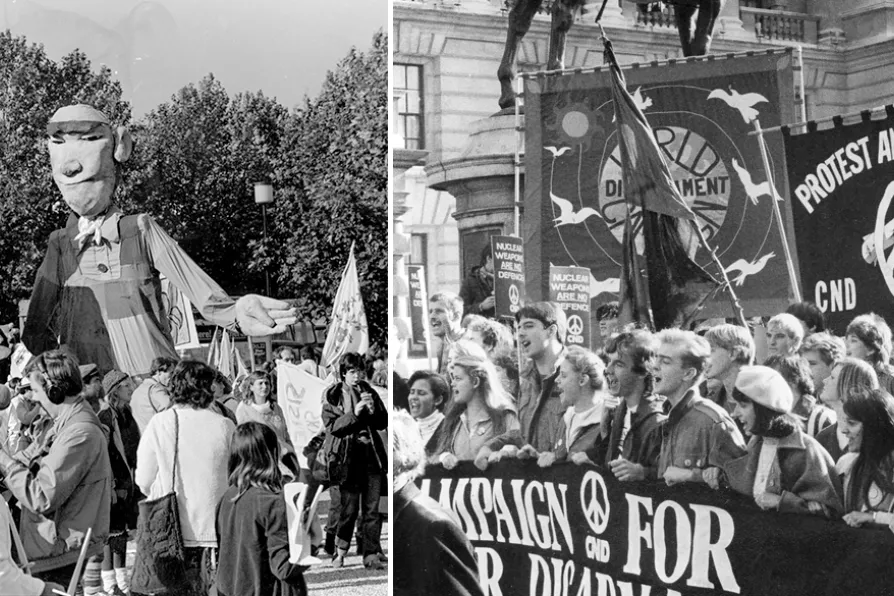Once the bustling heart of Christian pilgrimage, Bethlehem now faces shuttered hotels, empty streets and a shrinking Christian community, while Israel’s assault on Gaza and the tightening grip of occupation destroy hopes of peace at the birthplace of Christ, writes Father GEOFF BOTTOMS

 Countering forcefully the threat of global nuclear conflagration
[CND]
Countering forcefully the threat of global nuclear conflagration
[CND]
FORTY years ago, on October 22 1983, CND held the largest demonstration in its history with 400,000 people in Hyde Park.
The reason? West European leaders had decided to deploy new US missiles that would likely lead to nuclear war in Europe. British prime ministers — first Callaghan in 1979, then Thatcher — agreed to take cruise missiles, at Greenham Common and Molesworth bases, from 1983.
The deployment of these missiles — and Pershing missiles elsewhere in western Europe — meant that Europe would be the nuclear battleground in a war between the US and Soviet Union, which seemed ever closer.

SOLOMON HUGHES explains how the PM is channelling the spirit of Reagan and Thatcher with a ‘two-tier’ nuclear deterrent, whose Greenham Common predecessor was eventually fought off by a bunch of ‘punks and crazies’

RMT’s former president ALEX GORDON explains why his union supports defence diversification and a just transition for workers in regions dependent on military contracts, and calls on readers to join CND’s demo against nuclear-armed submarines on June 7













